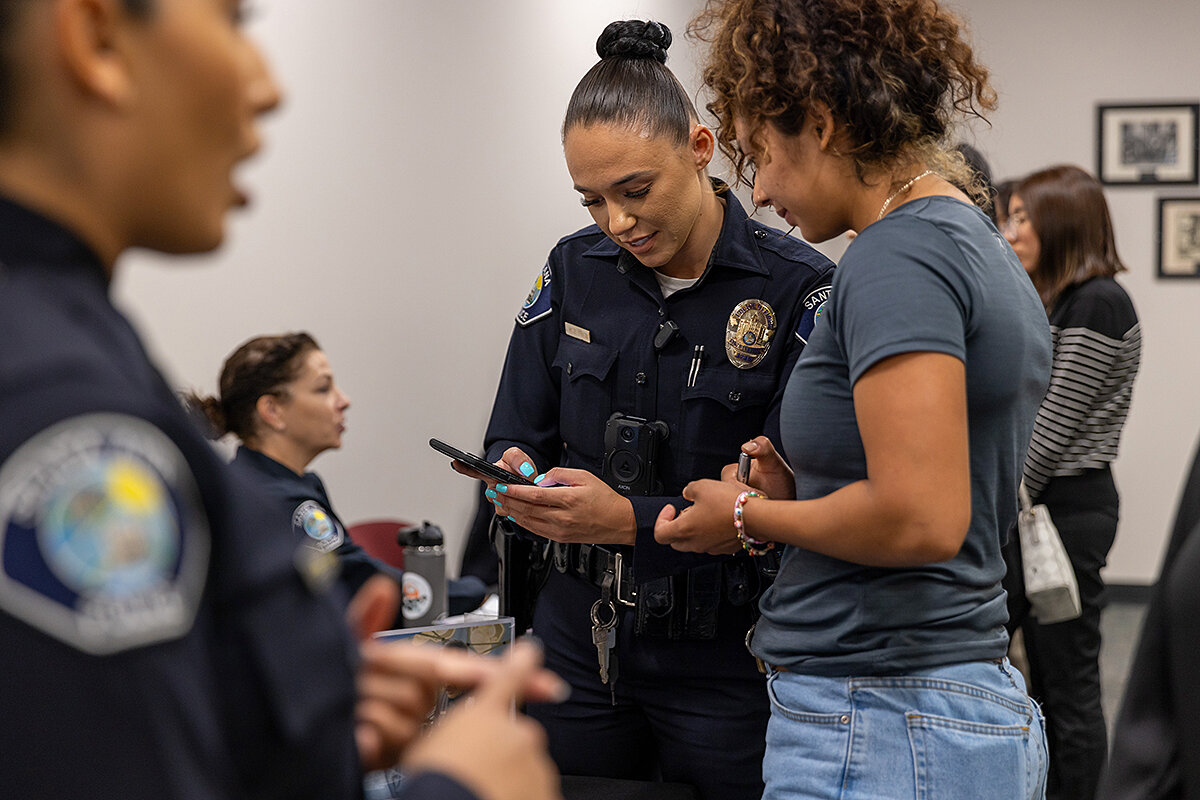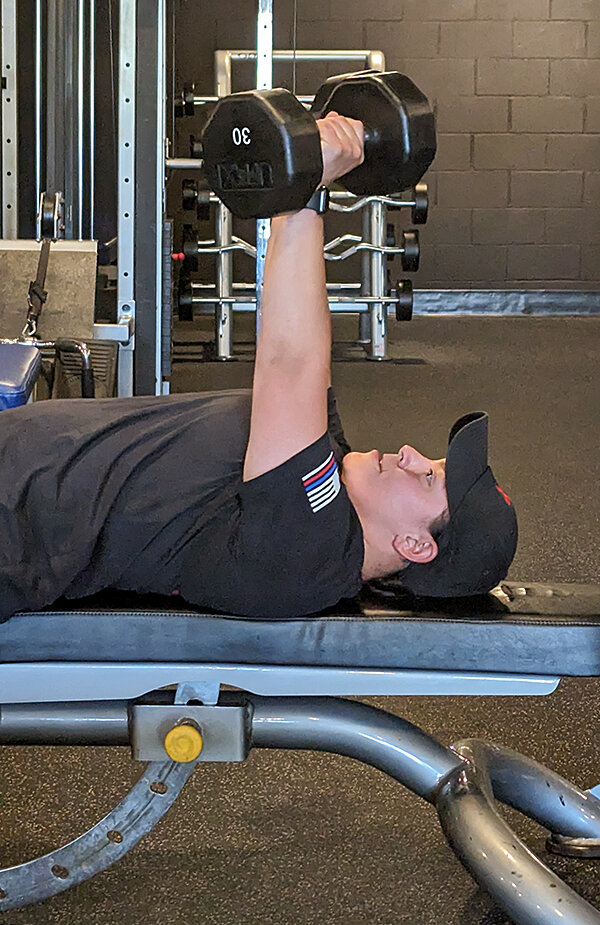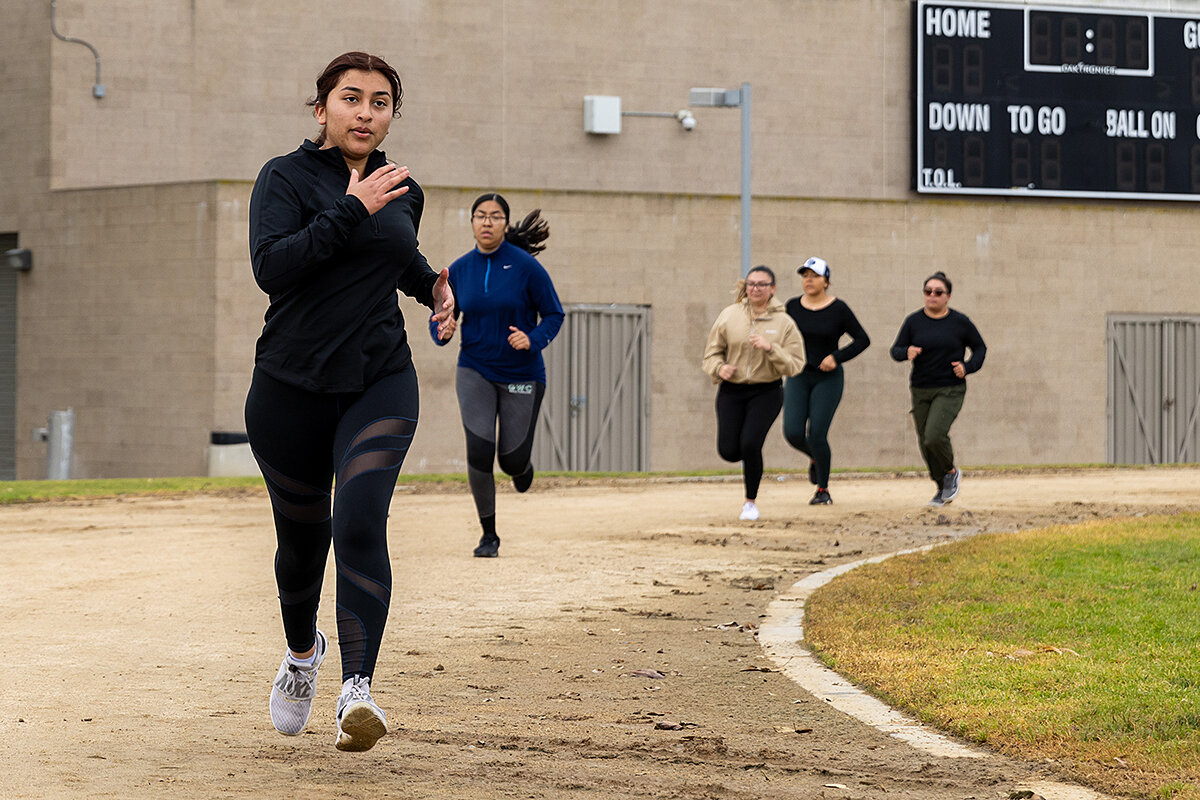Police reform: Nurturing female recruits long before they apply
Loading...
| Santa Ana, Calif.
When Santa Ana police arrived to arrest her drunken older brother in the midst of a family dispute, Aimee Rivera recalls feeling confused and desperate.
Still, amid the flashing lights, handcuffs, and tears, Ms. Rivera experienced a surprising level of support and empathy from the officers in her home – particularly the female officer who comforted her mother. Rather than treating her and her parents roughly, like stereotypical TV officers who barge in and badger victims and suspects, they were respectful. Instead of barking orders at the family, they were gentle.
“Santa Ana PD was very helpful and professional during and after the arrest,” she explains today. “I appreciated their take on the incident,” as they gently separated family members and objectively questioned each one.
Why We Wrote This
Police reforms aim to bring equity and new perspective to the male-dominated profession. One California police department starts mentoring potential female recruits even before they imagine themselves as officers.
The presence of that female officer, and the team’s softer touch, planted a quiet idea in the high schooler’s mind: She could be a police officer.
That idea was in the background through high school and then college. Two years ago, it took new shape: Working in a vitamin shop, she met a customer who was impressed with her attention to detail and presentation skills. He was a Santa Ana police officer who told her bluntly, “You could be a great police officer.”
And, through a national effort that the SAPD has signed on to – the , sponsored by the New York University Policing Project, which aims to make 30% of sworn police officers female by 2030 – Ms. Rivera now expects to formally apply to the Santa Ana agency. Santa Ana’s approach has offered Ms. Rivera and dozens of other potential female recruits personalized training tips for passing the rigorous physical agility test and relationships with the department that help them envision roles for themselves in law enforcement.
The department is intentionally engaging with women, creating direct and lasting contact long before they apply to become officers – even before they imagine the idea themselves, says the SAPD’s Sgt. Maria Lopez, who helps lead the program that starts contacts with girls as young as elementary school.
Ms. Rivera’s upcoming application is recognition that police work is “more than writing tickets and riding around in a police car,” and can offer female officers outstanding careers in the male-dominated field, says Commander Rosa Ponce de Leon, the top woman in the SAPD. She’s helping create what law enforcement experts call an extraordinary nurturing program for female recruits.
“Women bring a whole new important dimension to our work that should be acknowledged,” says Alex Gammelgard, president of the California Police Chiefs Association and chief of police in Grass Valley.
The SAPD serves a largely Hispanic community. Violent and property crime rates range above national averages. One of more than 300 agencies committed to the 30X30 Initiative, the 356-member agency now has 35 female officers. Nationwide, just 12% of officers are female, with a mere 3% in leadership positions.
Particularly after George Floyd’s murder at the hands of police in 2020, public demands for reform have grown. Adding a distinct female approach is a re-balancing effort to improve the depth and scope of the force in the Santa Ana community, says SAPD Chief David Valentin.
“There’s scientific evidence that women have a different skill set than their male counterparts,” he explains. “Women tend to be great communicators, and men can learn from that.”
“I am on their radar”
“Like most women who are committed, educated, and grounded, I didn’t see police work as an option,” says Commander Ponce de Leon. Only after serving in the Air Force and then interning with the Los Angeles Housing Authority did she recognize the connection that her knowledge of the law and a dedication to community service had to law enforcement.
The SAPD is encouraging such recognition by “creating relationships” long before an applicant comes through the door, says Chief Gammelgard.
Indeed, before Ms. Rivera’s formal application, she says the department’s sworn and non-sworn women enthusiastically rallied to support and encourage her.
A 2020 California State University, Fullerton graduate with a bachelor’s degree in kinesiology, Ms. Rivera worked part time for the university police department before graduation. Since then, she’s attended several SAPD recruiting events, where she’s met female officers and police department leaders who’ve become guides, cheerleaders, and coaches. She recently was one of 30 graduates of the SAPD’s 11-week Community Police Academy.
“I am on their radar,” Ms. Rivera says. “They’re on my side. I’m not just a number or statistic. They’ve really taken me through things and helped me.”
That “radar” begins early and can take creative forms as police officers visit high school career fairs, college softball tournaments, community meetings, and various local and regional events.
Ms. Rivera was one of over 100 prospects attending the SAPD’s first hiring expo for women in October 2022. The event – scheduled again this fall – introduces women to the department and application process.
Several months later, Ms. Rivera participated in the department’s first female training class. The event was a critical step, says the SAPD’s Sergeant Lopez, because potential female recruits often cite physical agility as their key barrier in the application process.
Designed to help future female officers pass the department’s agility test, the spring event drew nearly 50 women. The training event – including a 165-pound dummy drag and a sprint to a 6-foot wall climb – was a vital step for Ms. Rivera.
“It was an important way ... to give me a gauge, showing the things I need to work on,” she says. She needs to concentrate on mastering a 1 ½-mile run in under 14 minutes and upper body workouts to succeed at an obstacle course and wall climb.
Not just recruiting but changing culture
In Santa Ana, commitment to the 30X30 Initiative is three-pronged, with education, recruitment, and retention as top priorities. Educating women to see themselves in policing roles is key.
Female Santa Ana officers at the job fair and training class discussed careers one-on-one with potential recruits. “We have our department ... addressing any hesitation, answering questions from women,” Sergeant Lopez says. “They get to know us and some of our backgrounds, and we help them address certain characteristics they may possess that are useful in law enforcement.”
Meanwhile, notes Chief Gammelgard, “you can’t just recruit – you must design a culture where women are an important part of the whole.”
With that in mind, the SAPD is revising recruitment materials, says Commander Ponce de Leon: “We want you to be who you are and remain who you are. So we must transition to a more modern way of describing what we do for a living.”
The SAPD also positions its officers as role models.
“They need to see that this female officer ‘grew up just like me and is a police officer today – and that could be me,’” says Commander Ponce de Leon, who had few role models herself when she joined the force 21 years ago.
Ms. Rivera, for example, says she’s been impressed with Sergeant Lopez’s determination and strength of character in their many interactions. Sergeant Lopez, in turn, says Ms. Rivera exhibits the grit and motivation necessary to complete the extensive application and review process, which for Ms. Rivera is a bit longer now because she’s recovering from a hip flexor procedure.
The recruitment team recently spoke to competitors at the Mary Nutter Collegiate Classic, a Southern California softball tournament attended by the nation’s top women’s teams. Officers often speak to Marines stationed at nearby Camp Pendleton, visit commercial gyms, and pursue career fairs and classroom speaking opportunities. The department offers a QR Code to potential recruits via social media that connects them to recruitment officers, beginning a dialogue that continues online and in person.
“They begin to see police not as the enemy, but people who are here to help,” says Commander Jose Gonzalez. “It plants a seed that there’s a career option there, that being a member of law enforcement is an honorable and notable profession.”
As a future SAPD officer, Ms. Rivera says she hopes to help change the department’s culture – and to treat citizens with the professionalism, respect, and objectivity her family experienced from the lone female officer who assisted that difficult night of her brother’s arrest.






